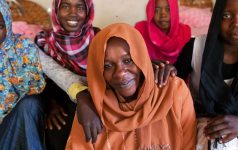Dalberg uses cookies and related technologies to improve the way the site functions. A cookie is a text file that is stored on your device. We use these text files for functionality such as to analyze our traffic or to personalize content. You can easily control how we use cookies on your device by adjusting the settings below, and you may also change those settings at any time by visiting our privacy policy page.
As part of its commitment to humanitarian action and to the post-2015 SDGs agenda, the IFRC aims to engage at least one person in every household around the world in increasing resilience to adversity. This “One Billion Coalition for Resilience”campaign would operationalize efforts through the IFRC’s network of volunteers and National Societies, with a focus on better preparedness for natural disasters and humanitarian crises. To support the campaign strategy the Federation sought to define current levels of community resilience worldwide, and to identify where the greatest resilience gaps and opportunities existed.
OUR APPROACH
The Dalberg team first helped the IFRC clarify the dimensions of resilience that it would focus on within its campaign. The definition encompassed six dimensions: financial capital, human capital, natural capital, physical capital, social capital, and governance systems. By defining ‘resilience’ in human terms, we were able to identify where specific types of programs would have greatest impact.
Dalberg mapped the resilience of communities across the globe. We gathered data for indicators under each of the six resilience dimensions and assessed every country on each indicator. Our analyses allowed the Federation to compare countries and to see where the greatest resilience gaps were found. For example, we found that over 1.2 billion people live in countries with the lowest financial income and access to financial institutions, predominantly in sub-Saharan Africa and Southeast Asia, while communities with the lowest natural resource assets (approximately 1.2 billion people) are mostly located in Europe, Central Asia, and the Middle East and North Africa. We also determined the number of people that could currently be classified as “resilient”. Our report highlighted existing IFRC work targeting each dimension of resilience, so the Federation could more easily decide on additional interventions that could be taken as part of its broader humanitarian mandate.
Finally, we assessed different models the Federation could adopt in creating the new coalition, to ensure successful set-up of the partnership. Our team looked at a wide range of change models for building coalitions. We identified best practice principles from typologies most relevant to the IFRC’s goals. Our expertise and analysis provided important recommendations for the campaign’s governance structure and national-level coalitions.
RESULTS
Dalberg’s work is serving as the foundation for the IFRC strategy and campaign to strengthen the resilience of up to 1 billion people worldwide. As Red Cross and Red Crescent Societies and volunteers begin building resilience in their local communities, our original resilience country assessments will help guide the gaps they address and the interventions they select. The coalition change models we identified supported the IFRC in determining the coalition’s structure and organization. Finally, our insights have helped the Federation understand how to catalyze action on resilience from non-traditional actors such as the private sector, governments, and civil society.



